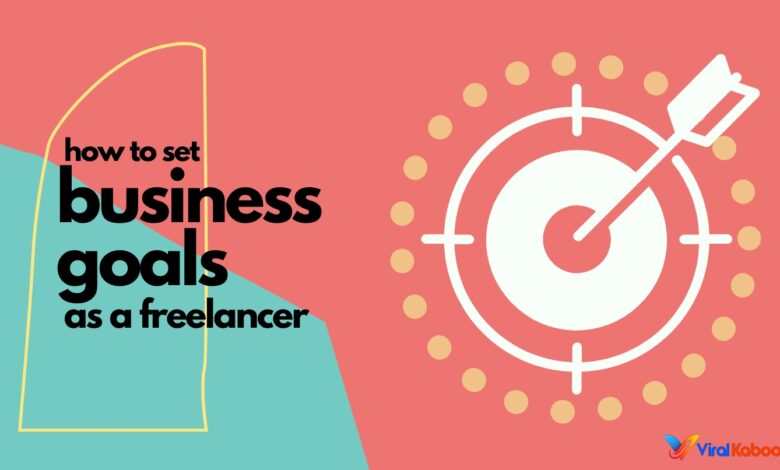Freelance Goal Setting: How to Create Achievable Goals

As a freelancer, no one will stand over your shoulder and tell you what to do next. No one keeps track of your progress or looks at your goals. And no one is making sure that your career is going in the right direction. You have to do all of that.
Setting good goals is important if you want to be successful. Goals are where you start when making plans, how you measure your progress, and where you start your work. They have several important advantages that freelancers can’t pass up:
- Goals give you focus and direction by creating targets for which you’ll aim
- Goals help you see how far you’ve come
- Goals help you gain skills and improve yourself
- Goals ensure you deliver quality work to your clients to ensure you always meet their needs
- Achieving your goals makes you feel confident and motivated to keep growing as a freelancer
In this article, we talk about how to set goals as a freelancer. We explain how to make good big and small goals using the SMART method.
SMART Goal Setting
Not all goals are equal. A goal that isn’t well thought out is hard to reach or even impossible to reach. So, before you start working toward your goals, you should make sure they are good ones that will keep you motivated, give you something to work toward and give you a good way to measure your progress.
If you want to reach your goals, they should be SMART:
- Specific
- Measurable
- Attainable
- Relevant
- Time-bound
A specific goal has a clear objective. It tells you what you want to do and how you plan to do it.
A measurable goal shows you exactly what success and failure are. Most of the time, a number is involved, but not always.
An attainable goal is something you can actually accomplish. The goal should be big enough to make a difference in your career but not so big that you can’t reach it. Setting goals you can’t reach will kill your motivation fast.
A relevant goal matters to you and your freelance career. If it doesn’t matter, you won’t want to work toward it.
A time-bound goal has a clear deadline. The point of a deadline is to push you to do something. If the goal doesn’t have a due date, it’s easy to put it off until tomorrow.
Let’s use a couple of examples to show this:
“I want to make more money!”
This is not a good goal. While it’s attainable and relevant, it’s not specific, measurable, or time-bound. How are you going to get more money? How much money do you need to make to reach the goal? How long do I have?
“I want to earn $15,000 through referrals within one year.”
This is a much better example of a goal because it meets all of our SMART criteria.
- Specifically, it tells how you’ll make the money.
- Measurable: The goal tells you exactly how much money you need to make to reach it.
- It’s possible to make that much in one year from a new business.
- Relevant: For a freelancer, making money through their work is important.
- Time-limited means that there is a clear end date.
Micro vs Macro Goals
Many freelancers make the mistake of setting goals that are too big and too hard to reach. Even though these goals meet the SMART criteria, they can’t be done. Most of the time, it’s best to break up your big goals into smaller ones.
Let’s look at an example of a goal from before:
“In eight months, I want to earn $8,000 from referrals.”
This is an example of a SMART goal, but it’s pretty big. More importantly, it doesn’t tell us how to do it, so it needs to be broken down into smaller steps, each of which should be its own micro goal. If it’s January 1st today, we might come up with the following mini-goals:
- Write a customizable referral request to send to clients by January 5
- Customize the referral request for each client and send it by January 10
- Follow up with each client regarding the referral request by January 20
- Reach out to new prospects and request a meeting by February 2
- Conduct first meetings with new prospects by February 20
- Create and send pitches for new services by March 10
- Begin servicing new clients by April 2
You can see that these small goals are much easier to reach than the big goal. Each micro goal, it tells you exactly how to reach it by doing tasks you already do. You won’t be afraid to ask for a recommendation because you already know how to do it.
If you finish all the small goals, it shouldn’t be hard to reach the big goal. You’ll reach your $8,000 macro goal if you hit each milestone and bill your new clients for April, May, and June. Your workflow, due dates, and income will all be different.
Read More: 8 Tips for Better Freelance Goal Setting












2 Comments